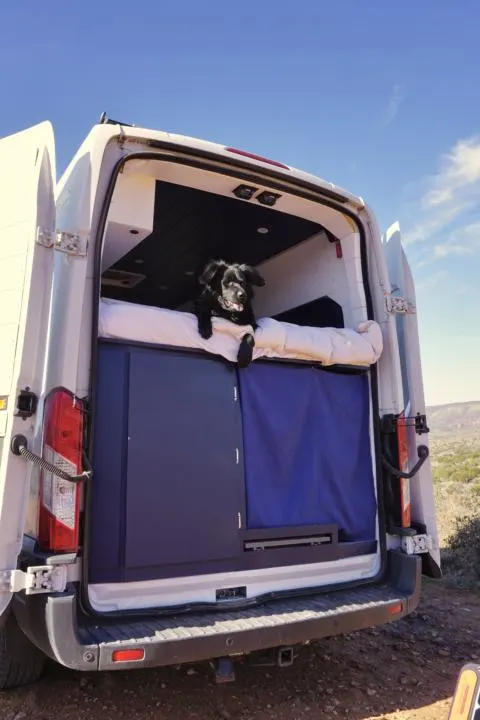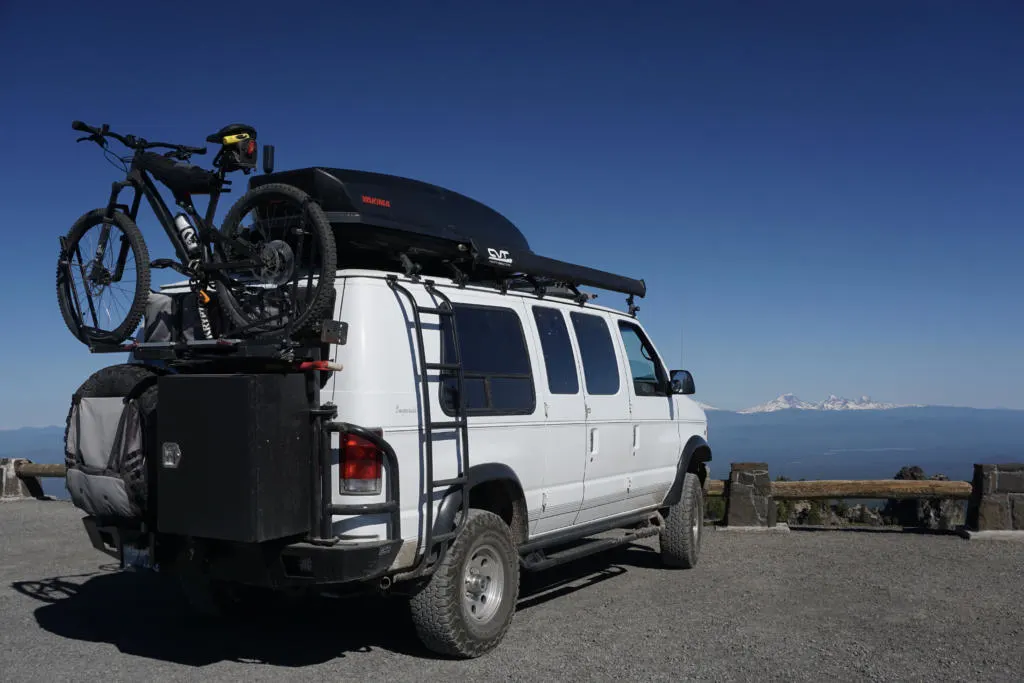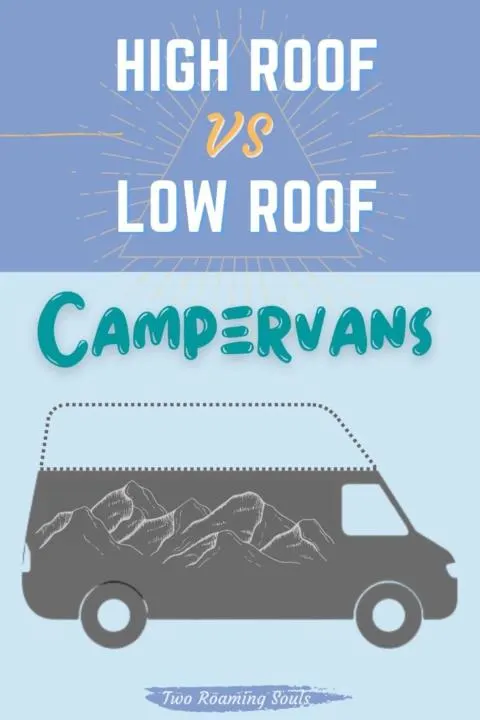
There’s a lot to consider when choosing a van for a campervan conversion. One important decision is choosing between high-roof versus low-roof campervans. The ability to stand up inside a campervan is a huge bonus for comfort and livability. But low-roof campervans can go more places, cost less, and offer more accessible roof storage. These are just a few important considerations when choosing between high-roof and low-roof campervans.
High-Roof Campervan Benefits
Tall Enough To Stand Inside
The primary benefit of a high-roof campervan for most people is the ability to stand up inside. {Read: Which vans can you stand up in?} Full standing room makes a campervan much more comfortable to live out of, especially for full-time vanlifers. You can live similarly to how you do in a traditional home. Many activities are just easier and more enjoyable when standing like; cooking, showering, changing, and simply moving around the van.
With a low-roof van, your indoor time will be spent crouched, sitting, or laying down. Thus, low-roof vans are better for fair-weather travel, when more time can be spent outside the van. More of a summer camping rig, than a full-time all-season dwelling.
Though, you could argue that spending more time outside your van is a good thing.

More Interior Space
While somewhat obvious to say, high-roof campervans also have more overall interior space. This means more space for furniture, personal items, or simply empty space to make the interior feel less cramped. You can have large overhead cabinets that don’t encroach on the living space as much.
With high-roof campervans, you can have a bed high enough to fit bikes underneath, with still plenty of room to sit up in bed.
Low Roof Campervan Benefits

Fewer Height Restrictions
Low-Roof campervans are less restricted by their height. They can access parking garages and drive-thrus. Thus making low-roof campervans better for those planning to spend more time in urban environments.
Another place vehicle height makes a difference is forest roads with low height clearance. Some forest roads have low-hanging branches that make it difficult for tall vehicles to pass. Things mounted on the roof can get snagged, or your paint job can get scratched. In our experience, this is more of an issue in wetter climates with thicker vegetation. For example, the dense forests in Coastal Oregon and Washington had many forest roads with low height clearance. But in the drier forests of Colorado and Utah, this is rarely ever an issue.
Less Expensive
Low-roof campervans are generally less expensive than comparable high-roof campervans. If you are buying brand new, there is always a higher price for high-roof models. And even when buying used, the high-roof premium is usually still baked into the price.
Easier Roof Access
Low-roof campervans offer easier access to the roof. It’s less of a hassle to store bikes, kayaks, or other gear on the roof. Thus, you will find more low-roof vans geared towards outdoor adventure type rigs.

Less Affected By Wind
A low-roof campervan has a smaller side profile and is less affected by cross winds. With high-roof vans, driving on the highway with strong cross winds can be annoying on long car rides. Or in extreme cases, it can become dangerous and require you to pull over and wait it out.
Low-roof campervans are also more aerodynamic, thus getting slightly better gas mileage. However, it’s easy to undo this advantage with many things mounted on the exterior of the van.
Lower Center Of Gravity
A low-roof campervan will have a lower center of gravity than a high-roof van. The lower center of gravity makes low-roof vans better candidates for more rugged off-road travel. They will feel less tippy in steep and off-camber driving conditions.
Conclusion | High-Roof versus Low-Roof Campervans
Choosing between high-roof versus low-roof campervans will be different for each person. What factors are most important to you may be different than mine. But from my perspective, the most valuable thing that high-roof campervans offer is the standing height and increased living space within the same size footprint. They will simply be able to house a more luxurious and comfortable conversion that’s especially appreciated by full-timers. But the size of the vehicle creates some more limitations and sacrifices for where and how you travel.
The primary benefits of a low-roof campervan are a cheaper price tag and the ability to travel more places with fewer limitations. And somewhat counterintuitively, low-roof vans can be better for both urban and extreme off-road situations.
So ultimately you need to decide what type of campervan you envision and what is most important to you. And there’s a lot more to consider than just roof height when choosing a van for a campervan conversion.
Share “High-Roof Versus Low-Roof Campervans” On Pinterest!


How Much Does A Professional Camper Van Conversion Cost? - tworoamingsouls
Wednesday 24th of May 2023
[…] are many things to consider when choosing the right van for a camper van conversion. Such as high roof vs low roof, used van vs new van, are you using it full time or part time, do you need a 4×4/AWD or 2wd, […]